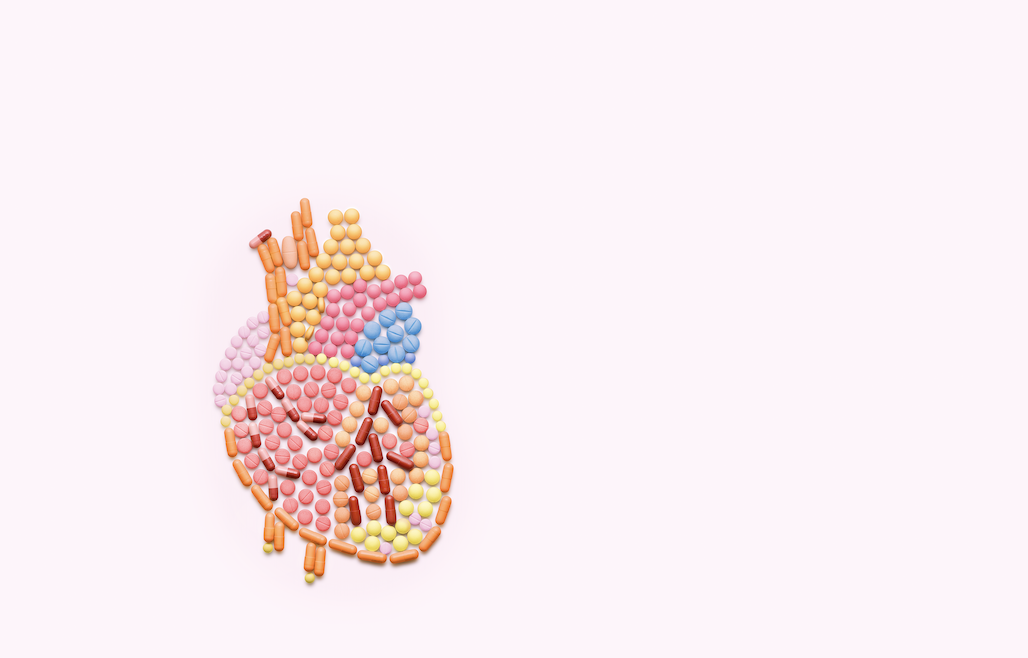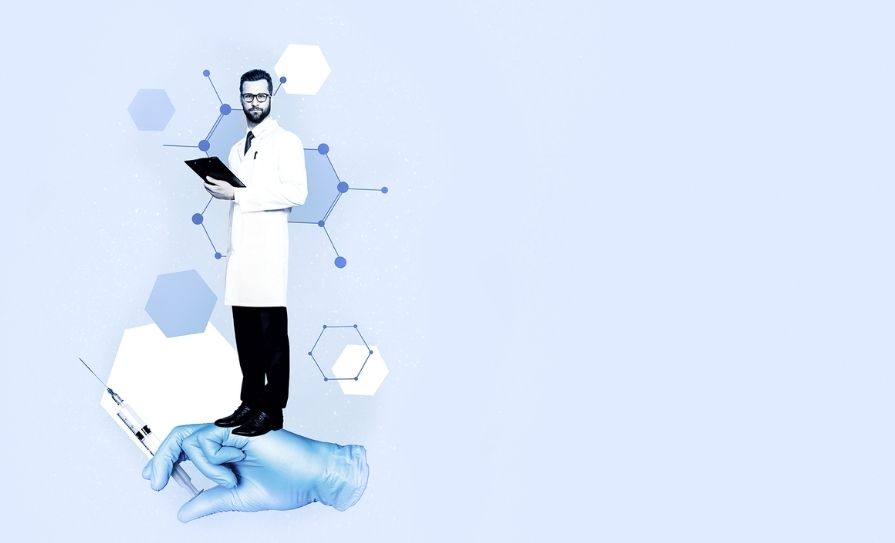Damien O’Brien MPSI on the importance of choosing the right dressing for the right wound, including effective wound care procedures
Introduction
A wound is defined as damage or disruption of living tissue such as skin, mucous membranes, or organs. Non-healing wounds affect a large number of people every year, particularly individuals aged 65 years and older. Therefore, non-healing wounds are a challenge for the health system.
Minimising wound complications is important to reduce morbidity and mortality, and to reduce the burden on the healthcare system. Wound care aims to promote healing of injuries to the skin and surrounding tissues. Pharmacists are often the first point of contact for patients with wounds, due to their accessibility in the community. Pharmacists have a varied role in wound care, including providing first aid, advising on the treatment of different wounds, dispensing prescribed medicines, providing patient education, and referring to other healthcare professionals when necessary. This article explores good wound care practices, common conditions, wound assessment, and both pharmacological and non-pharmacological treatment approaches.1
Background
Wounds occur due to a variety of factors, including trauma, burns, surgery, chemical damage or underlying conditions such as diabetes, immunological disease, and arterial/venous insufficiency.
Wounds can be classified as acute or chronic. Acute wounds generally follow a predictable healing pattern and heal within a predictable time frame. Examples of acute wounds include cuts, abrasions, and surgical wounds. For acute wounds, it is important to determine length of time since the injury, the likelihood of contaminants, when the patient had their last tetanus, and the involvement of neurovascular supply, bony structures, tendon, ligament, and muscle. Chronic wounds stall during normal stages of inflammation and often fail to heal within three months, usually due to underlying conditions, infection, or impaired healing processes. Examples of chronic wounds include diabetic ulcers, venous ulcers, and pressure injuries.2
Good wound care is necessary to prevent complications such as infection or delayed healing – which can result in discomfort, disability, or death. Proper wound care should address the patient’s needs, promote normal healing, and prevent complications. Wound care has been generally managed by doctors, nurses, or specialised multidisciplinary teams, but pharmacists can play an increasing role in medication management, promoting good practices in wound care, educating patients, and preventing complications.1,3
Assessment and diagnosis
The diagnosis of various wound conditions necessitates a comprehensive assessment of the patient’s medical history, characteristics of the wound, duration of the wound, previous trauma, and nutritional assessment of the patient. A wound assessment tool called TIMERS (Tissue, Infection/Inflammation, Moisture, Wound edge, Repair/Regeneration, Social) has been developed to help with this.
Assessment of wounds should follow a systematic approach, and the TIMERS framework provides a comprehensive method to do so. A detailed medical history is vital to identify any underlying conditions the patient may have that could impact on wound healing; including diabetes, vascular disease, and immunosuppression. The medical history should also gather information about the wound cause, previous treatments, previous ulceration, and allergies.2,4
A thorough assessment of the wound should measure size, depth, and location. The presence of necrotic tissue and exudate should also be assessed. It is vital that signs of infection – increased pain, inflammation, erythema, warmth, odour, and purulent discharge – are assessed in order to prevent complications. A wound culture may be necessary to identify the pathogen and ensure appropriate antimicrobial therapy. Furthermore, blood tests may be required to determine the patient’s general health and evaluate underlying conditions that could hamper wound healing. Such test can include a full blood count and blood glucose levels. Imaging studies, including ultrasound imaging, computed tomography scans, magnetic resonance imaging, and X-rays, may be useful in assessing deeper tissue involvement in chronic wounds. Finally, a nutritional assessment may be necessary. Malnutrition can be an impediment to wound healing, particularly in elderly patients and patients with chronic illnesses. This assessment can determine if a patient needs supplementation to improve wound healing.2,5
Wounds can vary widely in severity
and complexity and may require different management approaches
Effective wound care practices
Effective wound care involves a patient-centred approach, taking the wound type, underlying cause, and general health of the patient into account. A thorough assessment as outlined above is critical. Proper documentation is important to track the healing process and adjust treatment if necessary. Maintaining a clean environment is crucial in wound management to reduce the chance of infection and complications. Sterile saline is appropriate for cleaning wounds to remove bacteria and other contaminants. Ensuring proper hand hygiene, using gloves, and following infection control protocols are other important measures. The selection of appropriate wound dressings is important for protecting the wound from contaminants and promoting healing. Patient education on good wound care techniques is key in wound management. This includes changing dressings, monitoring for infection, managing pain, and adhering to the treatment management plan.2,4
Common wound conditions
Wounds can vary widely in severity, complexity and may require different management approaches. Acute traumatic wounds are usually caused by physical trauma and will follow a predictable healing pattern. Examples of acute traumatic wounds include cuts, lacerations, and puncture wounds.
Surgical wounds are deliberate incisions during a medical procedure. These can be managed in a controlled environment and follow a predictable healing process, when managed correctly. Burns can be caused by heat, chemicals, or radiation, and often require specialised wound care to prevent infection and to heal. Burns can be classified according to the extent and depth of tissue damage.
Pressure ulcers, also known as bedsores, are often seen in immobile or elderly patients and occur due to prolonged pressure on the skin. Diabetic foot ulcers are due to a combination of neuropathy and ischaemia. They are one of the major macrovascular complications of diabetes and can be chronic, leading to amputation if not correctly managed. Venous leg ulcers are due to poor venous circulation which leads to inflammation and breakdown of tissue. These wounds are chronic and often located on the lower legs.3,6,7
Pharmacological treatment
Pharmacological interventions are an important aspect of wound care, as they play a role in preventing infection, treating infection, reducing pain, and promoting healing.
Antibiotic agents are used to prevent and treat infected wounds. Topical antibiotics, such as neomycin, mupirocin, and fusidic acid are used for prevention or treatment of localised wound infections. Topical antibiotics may have a dose dependent effect, with some bacteriostatic at lower concentrations and bactericidal at higher concentrations.
Topical agents can be applied directly onto the wound or incorporated into wound dressings. They are useful in treating mild-to-moderate infection, where there is no involvement of deeper tissue or there are no systemic symptoms. They are usually well tolerated with the most common local adverse effects including erythema, itching, swelling, and irritation.8 Systemic antibiotics may be necessary in cases of wound infection that involves deeper tissues or if systemic symptoms are present, such as fever, malaise, significant skin erythema, and cellulitis. The antibiotic agent should be chosen in line with antimicrobial policy to prevent unnecessary and prolonged administration of antibiotics. The antibiotic regimen should be selected based on culture and sensitivity. Timely interventions have shown to be vital in cases such as sepsis. Flucloxacillin, clindamycin, doxycycline, and cephalexin are some examples of antibiotics used to treat wound infections. These are usually quite well tolerated but common adverse effects include nausea, vomiting, and diarrhoea.9
Analgesia plays an important role in wound care, particularly in the treatment of burns, acute traumatic wounds, and pressure ulcers. Pain is often experienced by patients and can be overlooked in wound care, but it can negatively affect wound healing and quality-of-life for patients. Pain is multi-factorial and involves both physiological and psychological aspects. Proper assessment of the pain, including pain type, duration, and severity, is necessary to establish an effective pain management plan. The World Health Organisation has a three-step plan for analgesia that can be modified for wound pain.
Step 1 involves the use of paracetamol and/or a non-steroidal anti-inflammatory drug (NSAID), with or without an adjuvant. NSAIDs that can be used include ibuprofen, diclofenac, naproxen, dexketoprofen, and meloxicam. NSAIDs are an important pharmacological intervention due to the inflammatory nature of chronic wounds. Adjuvants that can be used on Step 1 include anticonvulsants, tricyclic antidepressants, benzodiazepines, and corticosteroids. If pain is not controlled from Step 1 approaches, an opioid such as codeine or tramadol can be added onto the initial medication for Step 2 treatment. Step 3 treatment approaches are used if Step 2 medications fail. This involves discontinuing Step 2 medication and using more potent opioids such as morphine. The adverse effects of analgesics should be considered, with common adverse effects of opioids including respiratory depression, nausea, constipation, sedation, and risk of dependency.10
There are other pharmacological approaches used in wound care. Topical corticosteroids can be used on wounds, where an excessive inflammatory response is observed that is hindering wound healing. This practice is considered off-label use and should only be initiated and overseen by specialist services. Topical corticosteroids can increase the risk of infection and delay healing of open wounds if used inappropriately.11 Systemic corticosteroids may be used to treat ulcers that are secondary to connective tissue diseases, including rheumatoid arthritis and other disorders. They promote wound healing by moderating the excessive inflammatory response. However, prolonged use of corticosteroids can have a negative effect on wound healing. Additionally, long-term use of corticosteroids can have adverse effects including reduced bone mass density, mood alterations, adrenal insufficiency, and increased blood glucose levels.12 Silver sulfadiazine can be used topically as it acts on the cell membrane and wall to have a bactericidal effect. It is often used to prevent infection and promote healing in burns, superficial skin infections, and ulcers. Honey also has antimicrobial properties and is often used in dressings to maintain a moist environment and stimulate tissue regeneration.8,13
Non-pharmacological treatment
Non-pharmacological interventions are crucial in wound care and can be used as monotherapy or to complement pharmacological approaches. Non-pharmacological methods aim to address underlying factors that reduce wound healing, optimise the wound healing environment, and prevent complications.
Wound cleansing – using sterile saline or another appropriate cleanser – helps to remove bacteria and other contaminants from the wound, reducing the risk of infection and other complications. Debridement is the removal of necrotic tissue and is important for healing chronic wounds. Debridement can be carried out in a variety of different ways including chemically, mechanically, surgically, and autolytically.
Wound healing is optimised in a moist and clean environment as this facilitates the movement of growth factors and epithelial cells to the wound bed, as well as wound edge contraction. Dressing choice should be individualised for each patient and their needs. A dressing should create a clean and moist environment, remove excess exudate, prevent desiccation, allow gas exchange, be impermeable to microbes, and be free of toxic materials. Infected wounds and wounds with excess exudate should be monitored and changed more frequently, while non-infected wounds may be changed less regularly to ensure a moist environment is maintained. Dressings can vary widely in their properties and can include alginates, hydrocolloids, hydrogels, foam dressings, and silicone dressings.4
A technique called offloading involves reducing pressure on the affected wound area and promotes wound healing. This is particularly useful in patients with pressure injuries and diabetic foot ulcers. Compression therapy, using compression dressings or stockings, is an important intervention in treating venous leg ulcers. This helps to improve venous return and reduce inflammation. Proper nutrition and hydration are essential to optimise wound healing. A balanced diet, rich in minerals and vitamins (particularly vitamins A, C, and E), is required to support immune function and tissue repair. Finally, smoking is an impediment to wound healing due to reduced oxygen delivery to tissues. Therefore, smoking cessation should be encouraged to improve blood circulation and promote improved wound healing.4
Role of the pharmacist
Pharmacists are ideally placed in the community to play an important role in wound care, beyond the traditional role of dispensing medications. Firstly, pharmacists are involved in medication management in wound care – ensuring appropriate treatment of analgesics, antibiotics, and wound healing agents; screening for drug interactions; and ensuring adherence to medication. Pharmacists can educate and support patients on proper use of medication, infection control, and dressing changes. They can also provide patient education on lifestyle modifications that can enhance wound healing, such as nutritional support and smoking cessation. Pharmacists can also monitor for signs of infection and intervene if necessary to refer the patient to their GP to prevent complications. Finally, pharmacists can collaborate with other healthcare professionals to ensure a comprehensive care plan is developed and implemented for each individual patient, ensuring continuity of care, and improving clinical outcomes for patients.1
References
- Cheung DH, Schneider CR, and Um IS (2023). The role of community pharmacy in wound care: a scoping review. Journal of Wound Care, [online] 32(11), pp.728–737. doi:https://doi.org/10.12968/jowc.2023.32.11.728.
- Nagle SM, Waheed A and Wilbraham SC (2023). Wound assessment. [online] PubMed. Available at: www.ncbi.nlm.nih.gov/books/NBK482198/.
- Evans L (2015). The importance of effective wound care. [online] Open Access Government. Available at: www.openaccessgovernment.org/importance-effective-wound-care/ [Accessed 3 Sep. 2024].
- Labib A and Winters R (2021). Complex wound management. [online] Nih.gov. Available at: www.ncbi.nlm.nih.gov/books/NBK576385/.
- Grey JE, Enoch S, and Harding KG (2006). Wound assessment. British Medical Journal, [online] 332(7536), pp.285–288. doi:https://doi.org/10.1136/bmj.332.7536.285.
- Robles-Tenorio A, Lev-Tov H, and Ocampo-Candiani J (2022). Venous leg ulcer. [online] PubMed. Available at: www.ncbi.nlm.nih.gov/books/NBK567802/.
- Packer CF and Manna B (2023). Diabetic ulcer. [online] PubMed. Available at: www.ncbi.nlm.nih.gov/books/NBK499887/.
- Dallo M, Patel K, and Hebert AA (2023). Topical antibiotic treatment in dermatology. Antibiotics, 12(2), p188. doi:https://doi.org/10.3390/antibiotics12020188.
- Zabaglo M and Sharman T (2023). Postoperative wound infection. [online] PubMed. Available at: www.ncbi.nlm.nih.gov/books/NBK560533/.
- Bechert K and Abraham SE (2019). Pain management and wound care. The Journal of the American College of Certified Wound Specialists, [online] 1(2), pp.65–71. doi:https://doi.org/10.1016/j.jcws.2008.12.001.
- Use of topical steroids in wound care where an excessive inflammatory response may be present Dec 2020. (n.d.). Available at: gp-portal.westhampshireccg.nhs.uk/wp-content/uploads/2021/09/Use-of-Topical-Steroids-in-Wound-Care-Dec-2020-Final.pdf.
- Enoch S, Grey JE, and Harding KG (2006). Non-surgical and drug treatments. BMJ : British Medical Journal, [online] 332(7546), pp.900–903. Available at: www.ncbi.nlm.nih.gov/pmc/articles/PMC1440619/.
- Tashkandi H (2021). Honey in wound healing: An updated review. Open Life Sciences, [online] 16(1), pp.1091–1100. doi:https://doi.org/10.1515/biol-2021-0084.







